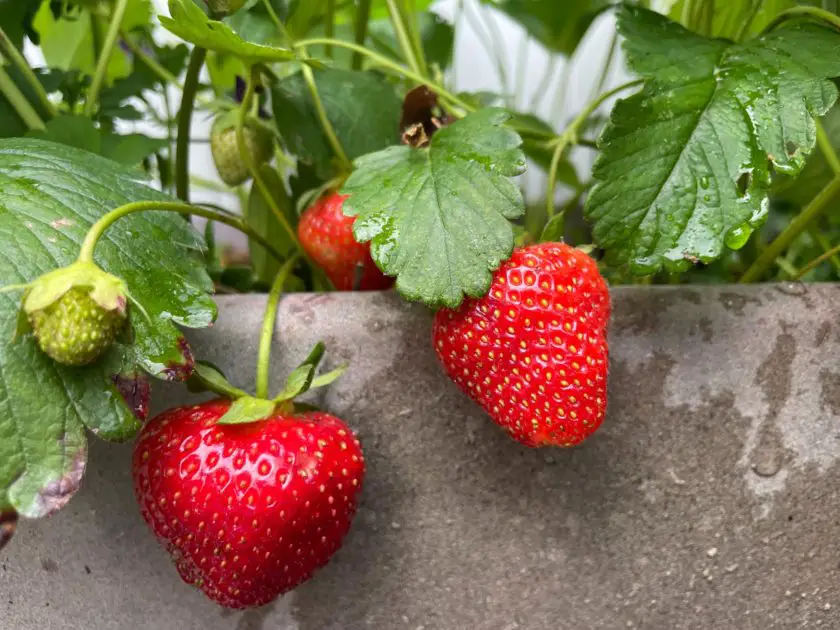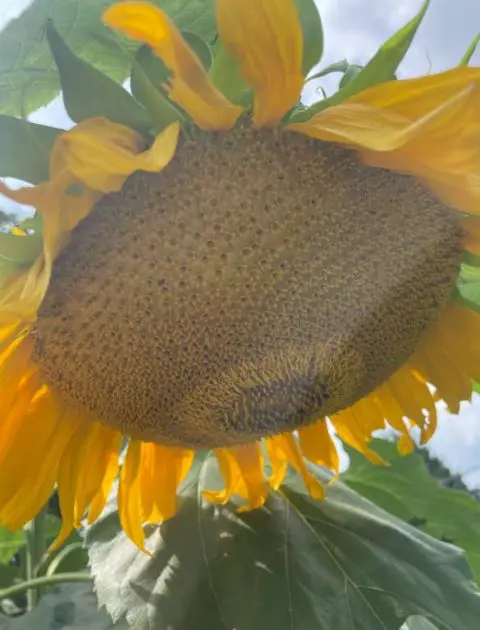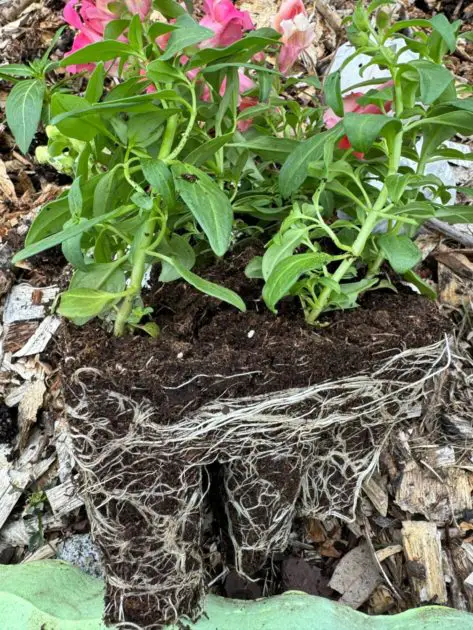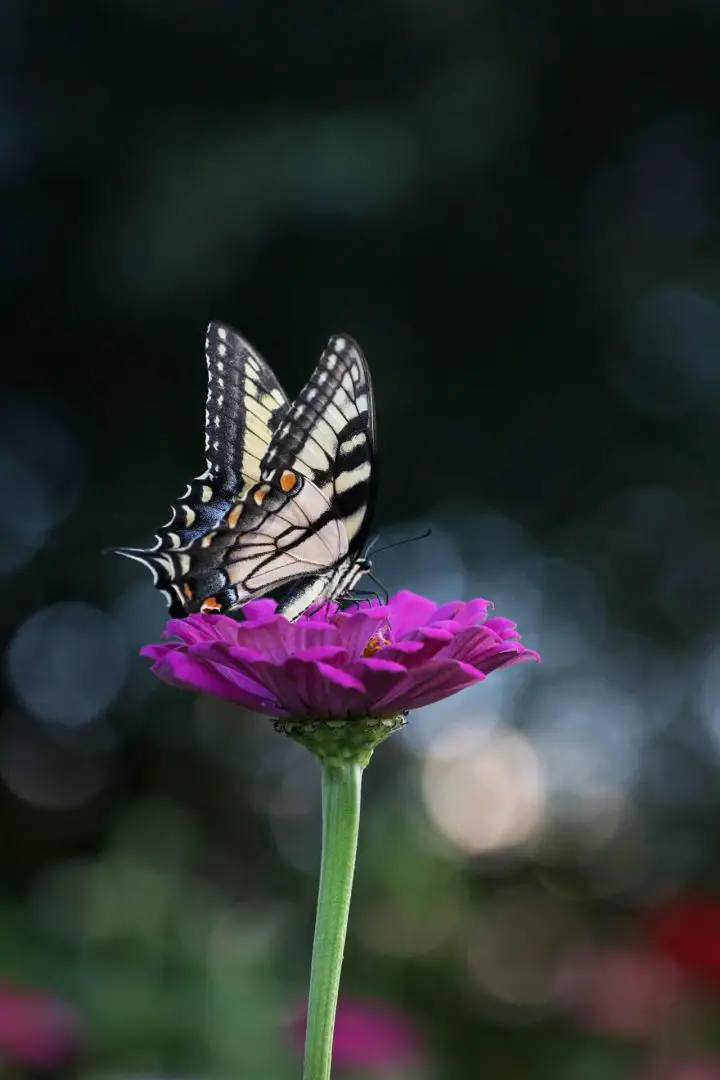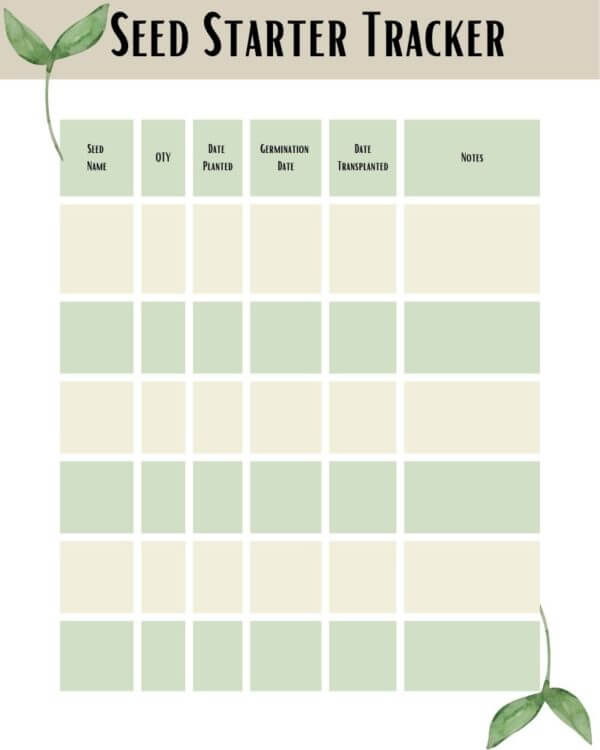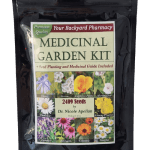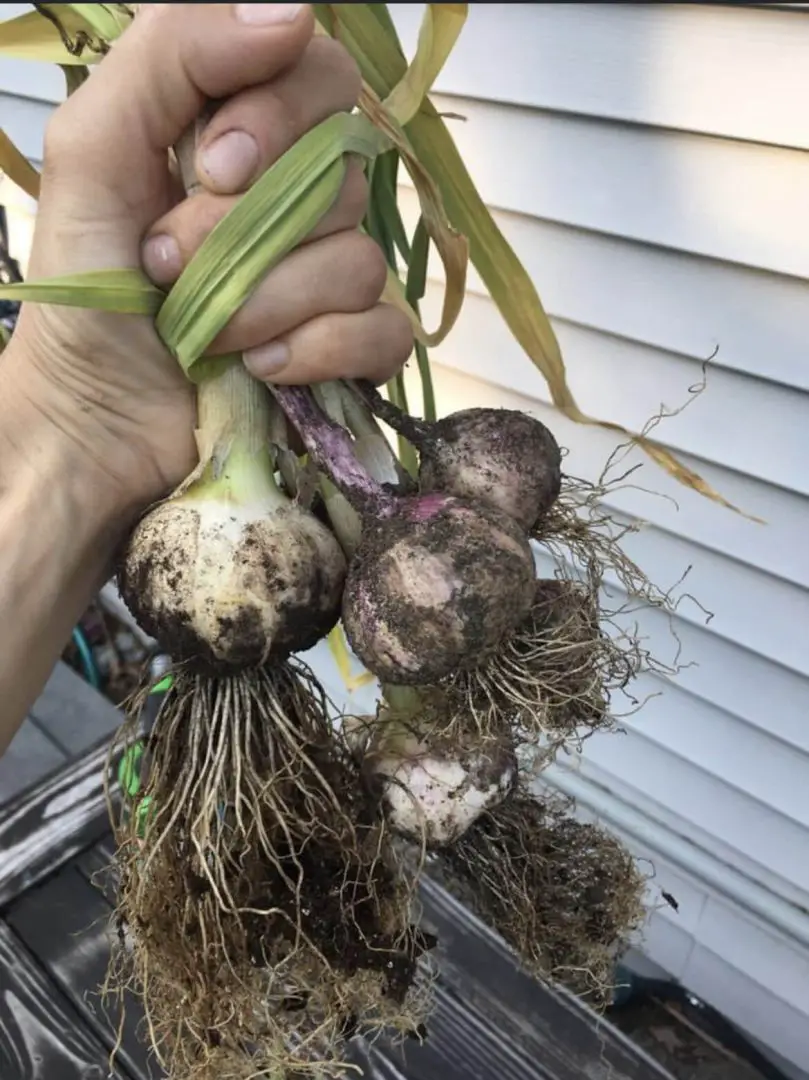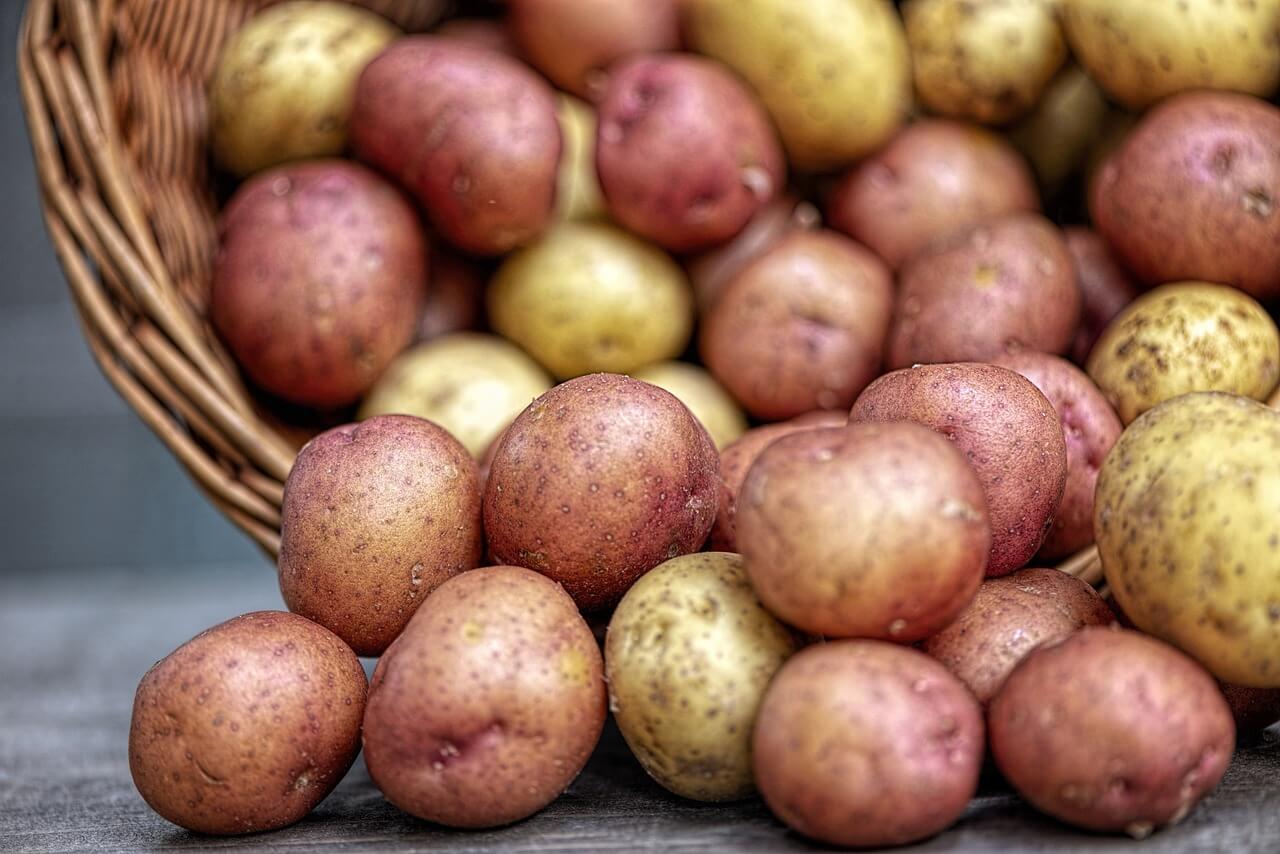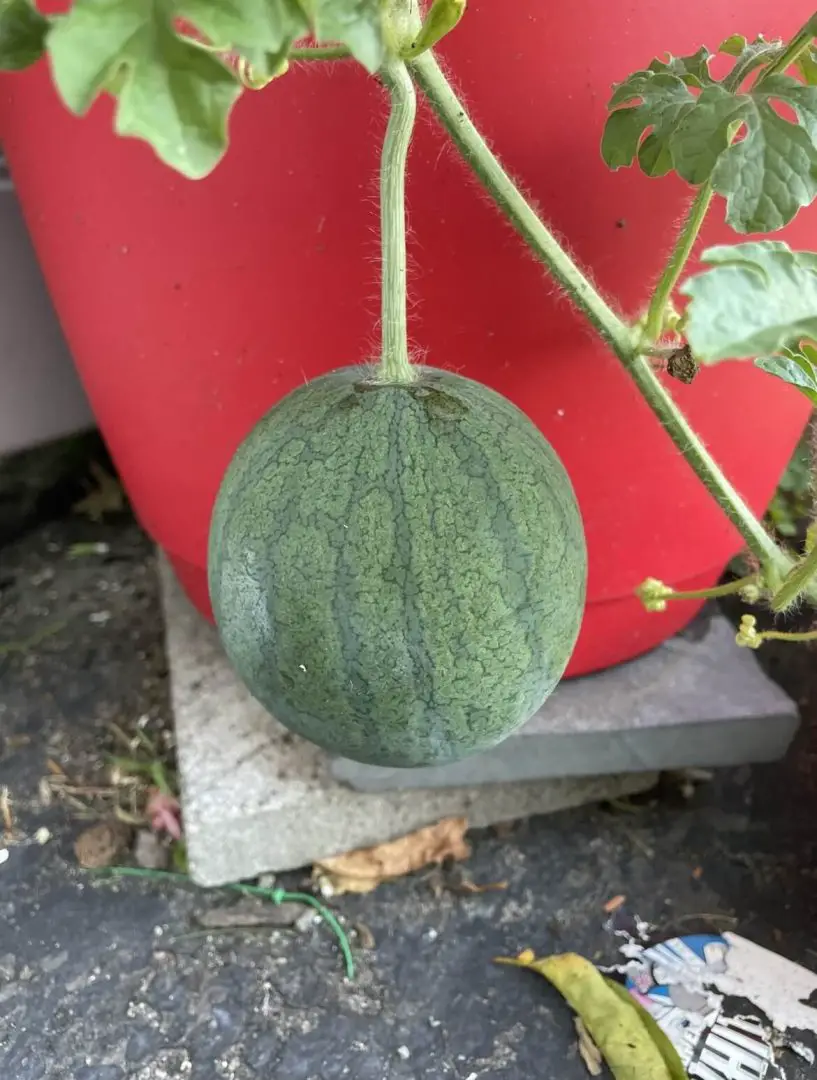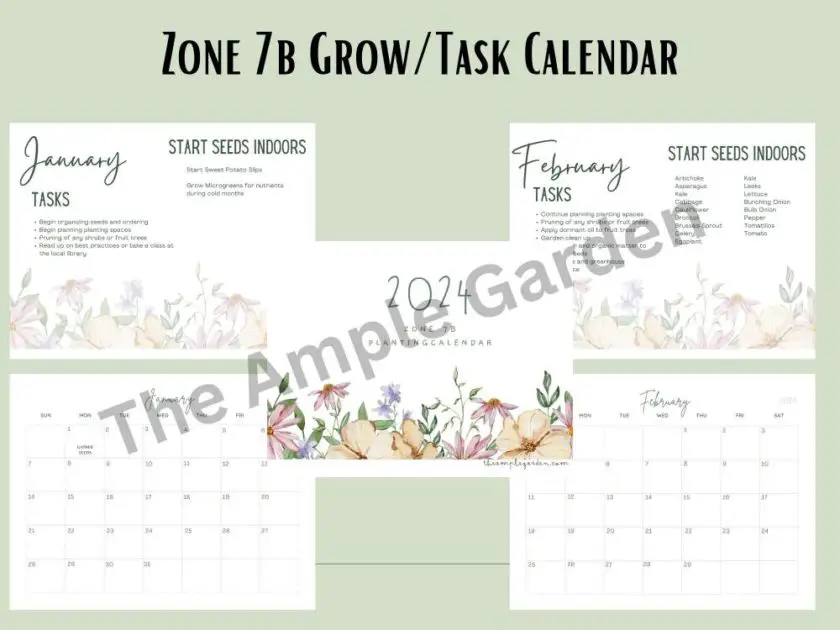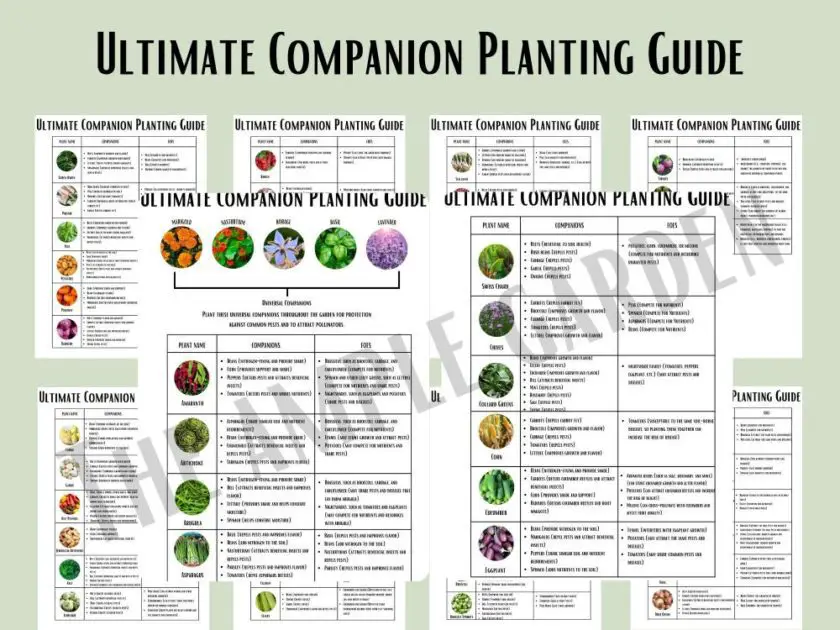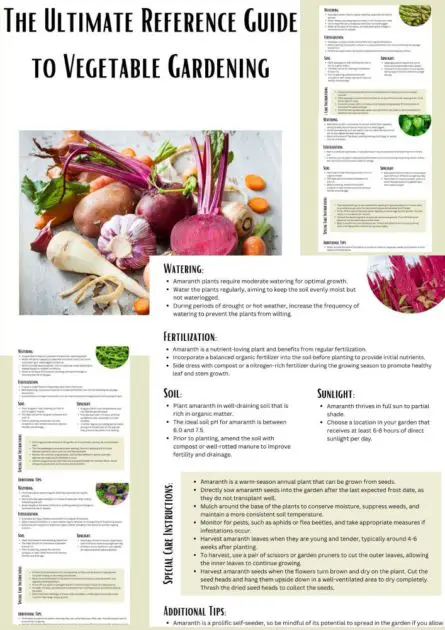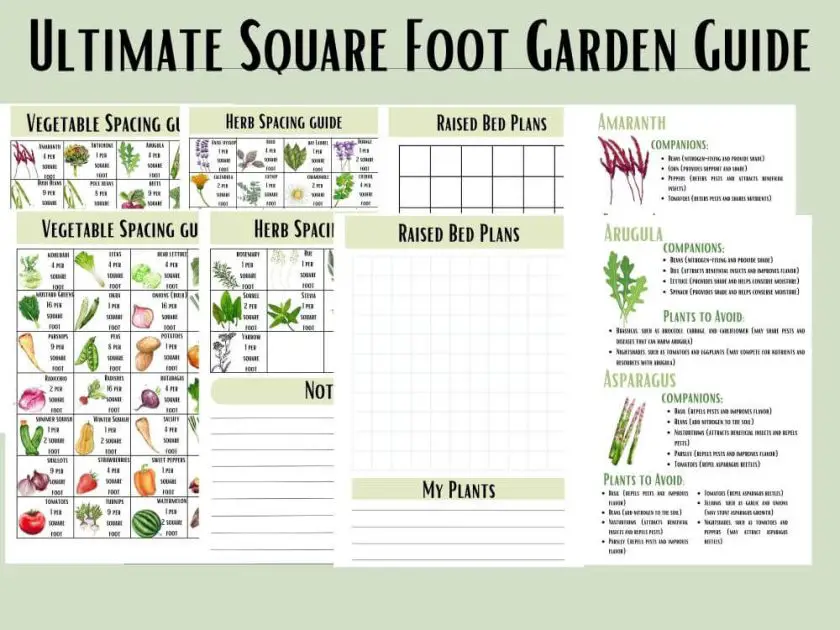As the weather on Long Island (zone 7b) warms up and the spring flowers make their long-awaited appearance, I can’t help but smile at the yellow daffodils, blue hyacinths, and maroon hellebores that openly greet me each morning. Nature’s palette has so many choices for gardeners to choose from. Among the vast choices of color that nature has to offer, pink stands out as a favorite. If you too are drawn to the beauty of pink and are looking to incorporate it into your home garden landscape, we’ve got you covered. Whether you are an experienced gardener or novice looking for ideas, we have a list of the 10 most stunning types of pink flowers you can add to your home collection. Let’s embark on this planting journey together!
Helpful Items When Planting Types of Pink Flowers
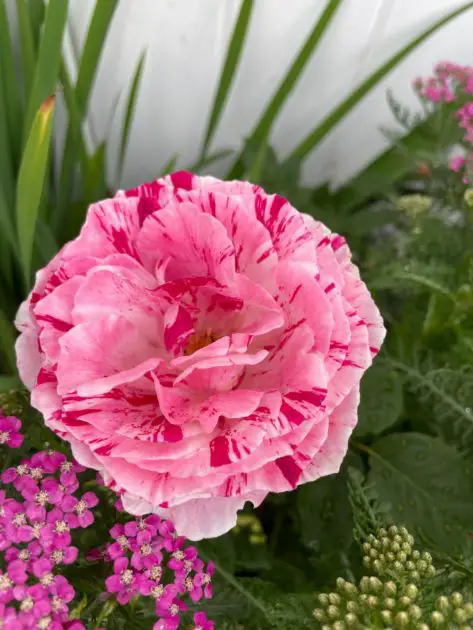 Pin
Pin 1. Roses
Our first suggested type of pink flower is the quintessential rose. Its elegance and beauty is fit for a queen. Roses can be added to flower beds to add depth and add its stunning beauty to the backdrop of a garden.
Of course, she can always stand alone in containers as well. Climbing varieties can be added to a trellis to add a pop of color anywhere. This easy to care for perennials can last up to 50 years once established. They are beautiful by themselves or adorned with lavender, lilies, or marigolds.
- Plant in well-drained soil in a sunny spot.
- Water deeply once a week, especially during dry spells.
- Avoid overhead watering to prevent fungal diseases.
- Prune in late winter or early spring to promote healthy growth.
- Prune lightly in the fall to remove dead or diseased wood.
- Apply a layer of mulch to retain moisture and suppress weeds.
- Feed with a balanced fertilizer in early spring and after the first flush of blooms.
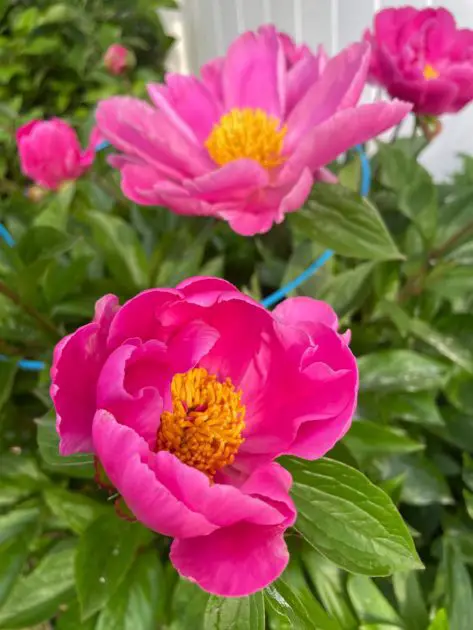 Pin
Pin 2. Peonies
Peonies will reward the home garden with years of blooms. Some can come back for 100 years and are probably one of my favorite type of pink flower to add to the garden. Not only for the longevity and ease of care but because of their brilliant, bright blooms.
Peonies do well planted towards a fence line as they grow rather tall. They provide a beautiful, pink backdrop to any border garden. Their fluffy petals come in a variety of petals but our absolute favorites are the ones in soft hues of pink. Peonies are like divas of the flower world and believe me, they know it! But who could blame them with their luxurious blooms and intoxicating fragrance that create an incredible show wherever they’re planted.
Not to mention their lush, deep green leaves that offer the perfect background to their stunning blooms. Peonies are like having that friend who always manages to steal the show at parties. Hard to forget and completely fabulous. Once added into your garden they become impossible to ignore. You will you wonder how you ever lived without them!
- Plant in fertile, well-draining soil in a sunny to partially shaded spot.
- Give ample space between plants to avoid crowding.
- Water regularly when newly planted, then less frequently once established.
- Deadhead faded blooms to encourage more flowers.
- Remove any diseased or damaged foliage promptly.
- Cut back foliage to the ground after the first frost in late fall.
- Mulch around the base of the plants to protect roots during winter.
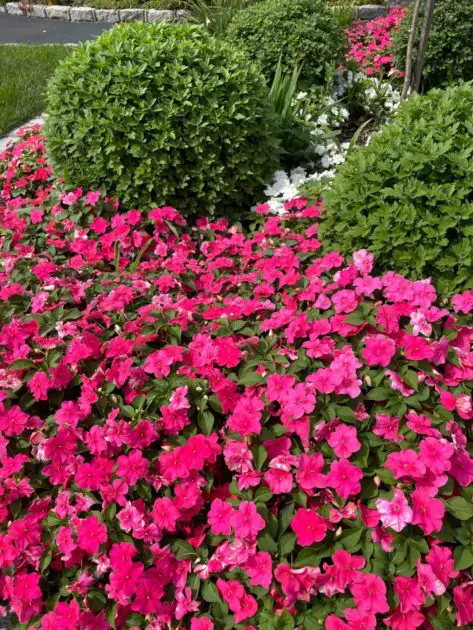 Pin
Pin 3. Periwinkles
Periwinkles might not be at the forefront of your mind when thinking of flower gardens, but don’t overlook these little beauties – they could make all the difference! Think dainty blooms in shades of pink among glossy green foliage – an image which should bring to mind what periwinkles can offer your landscape!
Super easy to grow and practically thrive under neglect – even forgetting watering them for weeks would still leave them looking cheerful as ever! Plus they are versatile – great additions can add color pops wherever needed in borders, rock gardens or hanging baskets – next time you think about improving your garden don’t overlook these darlings as they could steal your heart!
- Plant in well-drained soil and provide partial to full sun.
- Deadhead spent flowers regularly to promote continuous blooming.
- Resilient and low-maintenance, periwinkles add vibrant color to garden beds and containers.
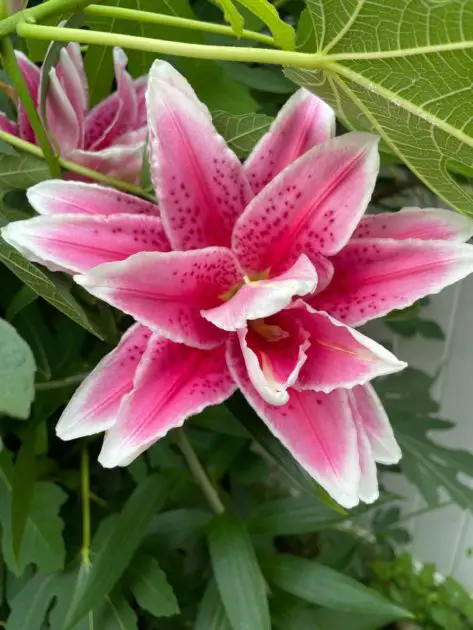 Pin
Pin 4. Lilies
Lilies are an undeniably elegant flower choice in any garden. Boasting an extensive spectrum of colors spanning delicate pastels to vibrant hues, each variety boasting their own special charm. Lilies never fail to make an impressionful statement.
Their long, slender stems bear trumpet-shaped flowers which move with the wind, creating an eye-catching display. Plant them in well-drained soil with plenty of sunlight for best results. Lilies require low maintenance but will benefit from being mulched periodically to retain moisture and suppress weeds, and to extend their blooming season.
Deadhead faded flowers as soon as they appear and remove yellowing foliage to prolong blooming seasons. Lilies add timeless beauty and timeless grace to any outdoor space, making them must-haves for gardeners looking to elevate their outdoor spaces.
- Plant lilies in well-drained soil with good sunlight exposure.
- Provide support for taller varieties to prevent them from bending or breaking in strong winds.
- Water regularly, especially during dry spells, but avoid overwatering to prevent root rot.
- Apply a balanced fertilizer in spring to promote healthy growth and abundant blooms.
- Mulch around the base of the plants to retain moisture and suppress weeds.
- Deadhead spent flowers to encourage continuous blooming and remove any developing seed pods to redirect energy into new blooms.
- Watch out for common pests like aphids and lily beetles; handpick or use organic pest control methods if necessary.
- In colder climates, protect bulbs from freezing temperatures by applying a layer of mulch in late fall.
- Consider planting lilies in containers for added versatility and to showcase them on patios or balconies.
- Enjoy the stunning beauty and intoxicating fragrance of lilies in your garden or home!
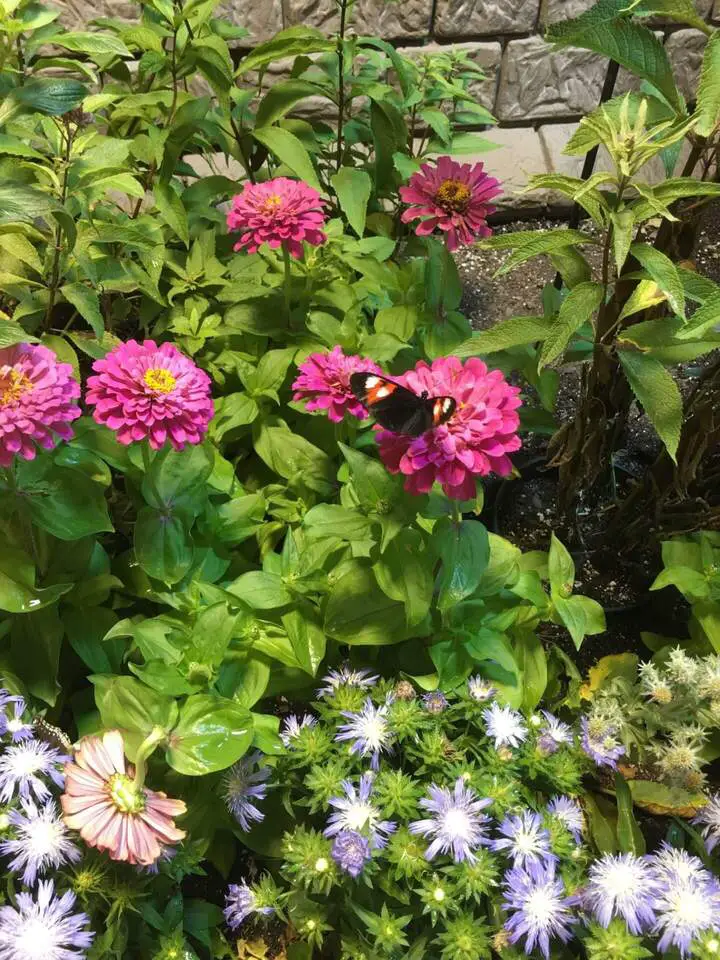 Pin
Pin 5. Zinias
Zinnias bring an energetic charm and friendly disposition to any garden party, adding instant joyous color. Boasting vibrant red, orange, yellow and pink hues bursting from each bloom add an instant splash of joyous vibrance into any landscape. Zinnias are indispensable, no matter your gardening skill level or experience.
Plant them in well-drained soil with plenty of sunlight for maximum blooming potential. Zinnias are drought-tolerant once established, making them perfect for hot, sunny spots in your garden. Plus, their vibrant blooms attract pollinators like bees and butterflies for an ever-buzzing garden throughout summer.
With regular deadheading, these prolific bloomers produce profusion of blooms – perfect for cut flower arrangements as well as border edging or mass plantings – adding summer color and whimsical charm.
- Plant zinnias in well-drained soil and provide full sunlight for optimal growth and blooming.
- Water regularly, especially during dry periods, but avoid overwatering to prevent root rot.
- Deadhead spent flowers regularly to encourage continuous blooming throughout the season.
- Mulch around the base of the plants to retain moisture and suppress weeds.
- Fertilize zinnias lightly with a balanced fertilizer every 4-6 weeks during the growing season to promote healthy growth and vibrant blooms.
- Consider planting zinnias in containers or hanging baskets for added versatility and color in your garden or patio.
- Watch out for common pests like aphids and caterpillars; handpick or use organic pest control methods if necessary.
- Enjoy the vibrant colors and long-lasting blooms of zinnias in your garden, as well as in cut flower arrangements to bring a touch of summer indoors.
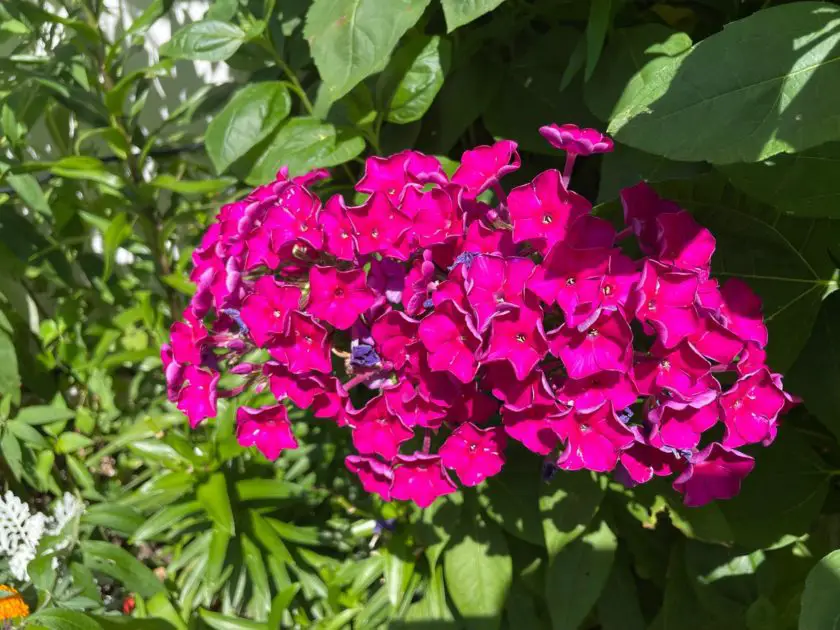 Pin
Pin 6. Phlox
These beauties may not get as much hype as some other types of pink flowers, but let me tell you, they’re total game-changers. Picture this: clusters of tiny, star-shaped blooms in the dreamiest shades of pink, purple, or white, just begging for attention.
Phlox is like that friend who always knows how to brighten your day – reliable, cheerful, and oh-so-lovely! Plus, they’re super easy to grow. Seriously, just pop them in some well-drained soil, give them a bit of sun, and watch them thrive! Oh, and did I mention their fragrance? It’s like a little slice of heaven in your garden.
And here’s the best part – they attract all sorts of pollinators, from butterflies to hummingbirds, adding even more life to your outdoor space. So, next time you’re planning your garden, don’t overlook the humble phlox – they may just steal your heart!
- Plant phlox in well-drained soil and provide full to partial sunlight for optimal growth.
- Water regularly to keep the soil consistently moist, especially during hot, dry periods.
- Deadhead spent blooms to encourage continuous flowering throughout the season.
- Divide clumps every few years to rejuvenate older plants and maintain vigor.
- Apply a balanced fertilizer in spring to promote healthy growth and abundant blooms.
- Watch out for common pests like spider mites and powdery mildew; treat promptly with appropriate measures if detected.
- Mulch around the base of the plants to conserve moisture, suppress weeds, and protect roots.
- Enjoy the vibrant colors and sweet fragrance of phlox in your garden, as well as in cut flower arrangements to bring a touch of nature indoors!
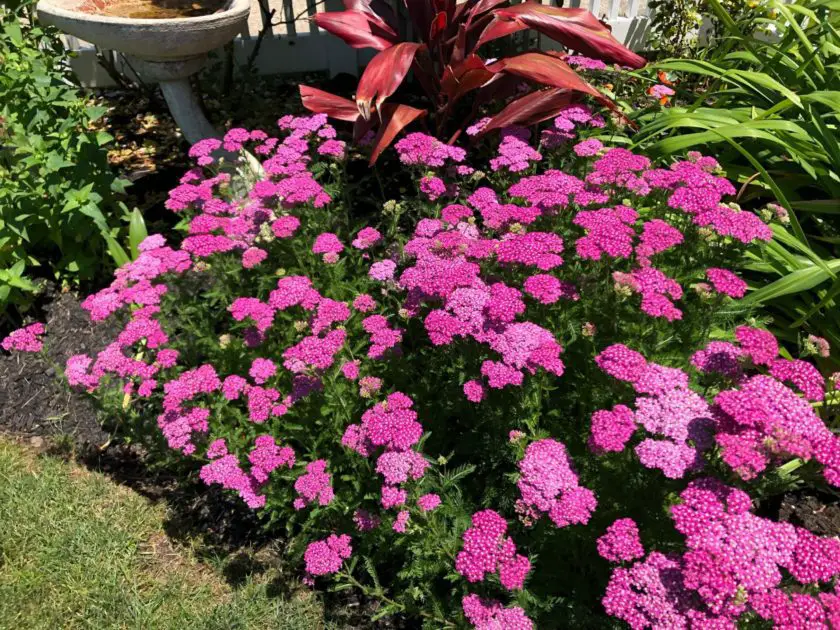 Pin
Pin 7. Achilleas
Pink achilleas, also known as yarrow, are enchanting additions to any garden with their delicate blooms and feathery foliage. These types of pink flowers are hardy perennials and boast clusters of tiny, star-shaped flowers in shades ranging from soft blush to vibrant magenta, creating a stunning display that attracts pollinators like bees and butterflies.
Pink achilleas are not only beautiful but also incredibly versatile, thriving in a variety of conditions from full sun to partial shade. Plant them in well-drained soil and provide regular watering, especially during dry spells, to ensure healthy growth and abundant flowering. With their long-lasting blooms and low-maintenance nature, pink achilleas make a charming addition to flower beds, borders, and wildflower gardens.
Whether used as a ground cover or as a focal point in mixed plantings, these delightful perennials add a touch of romance and whimsy to any landscape.
- Plant achilleas in well-drained soil and provide full sun for best blooming.
- Water regularly during the growing season, but avoid overwatering to prevent root rot.
- Deadhead spent blooms to encourage continuous flowering and maintain a tidy appearance.
- Divide clumps every few years to rejuvenate older plants and promote vigorous growth.
- Mulch around the base of the plants to retain moisture and suppress weeds.
- Provide support for taller varieties to prevent them from flopping over.
- Watch out for common pests like aphids and spider mites; treat promptly if detected.
- Enjoy the vibrant blooms and attractive foliage of achilleas in your garden, as well as in cut flower arrangements to add a touch of natural beauty to your home!
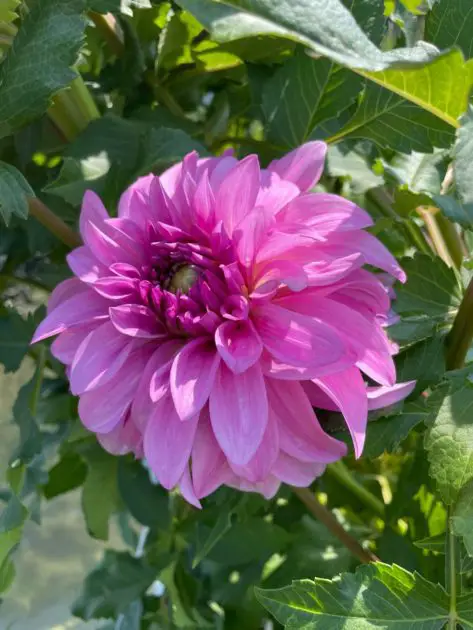 Pin
Pin 8. Dahlias
Imagine walking through your garden and being greeted by these flamboyant blooms in every color of the rainbow – it’s like a burst of happiness right in your backyard! Dahlias come in all shapes and sizes, from petite pompons to dinner-plate-sized stunners, each one more eye-catching than the last. And the best part?
They’re surprisingly easy to grow making them the perfect types of pink flowers for the home gardener! Seriously, just pop them in some well-drained soil, give them a bit of sun, and watch them work their magic. Oh, and did I mention their versatility? Whether you’re filling gaps in your flower beds, adding drama to your borders, or creating jaw-dropping floral arrangements, dahlias have got you covered.
Plus, they’re a hit with the bees and butterflies, so you’ll be doing your part for the pollinators too! So, if you’re looking to add a splash of color and excitement to your garden, look no further than the fabulous dahlia!
- Plant dahlias in well-drained soil and provide full sun for optimal growth and blooming.
- Water regularly, especially during dry periods, but avoid overwatering to prevent tubers from rotting.
- Stake taller varieties to support their stems and prevent them from flopping over.
- Deadhead spent blooms regularly to encourage continuous flowering throughout the season.
- Fertilize dahlias with a balanced fertilizer every 4-6 weeks during the growing season to promote healthy growth and abundant blooms.
- Mulch around the base of the plants to retain moisture, suppress weeds, and regulate soil temperature.
- Watch out for common pests like aphids, slugs, and snails; treat promptly if detected.
- In colder climates, dig up tubers in the fall after the first frost, store them in a cool, dry place, and replant them in spring for another season of stunning blooms.
- Enjoy the vibrant colors and intricate shapes of dahlias in your garden, as well as in cut flower arrangements to bring a touch of beauty indoors!
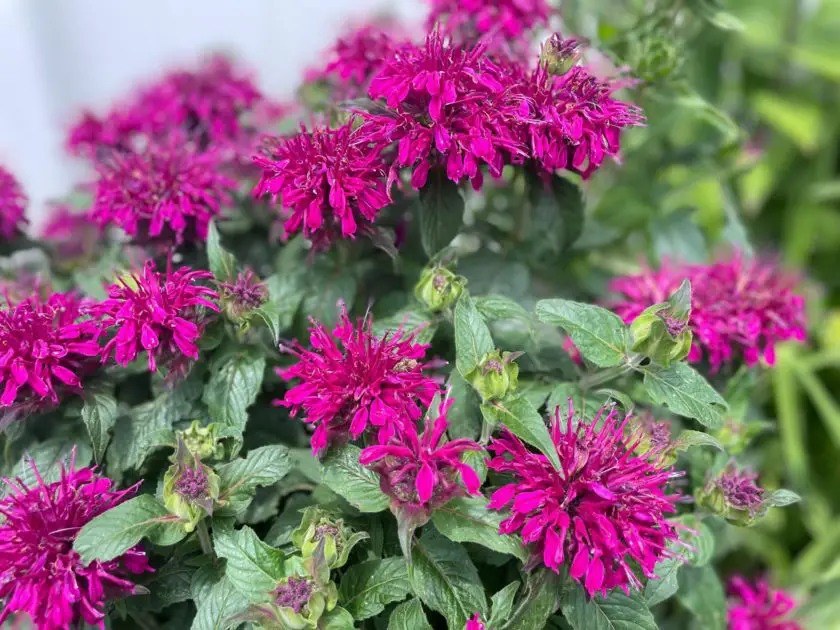 Pin
Pin 9. Bee Balm
Bee balm, also known as Monarda, is a vibrant and versatile perennial that brightens up any garden with its colorful blooms and aromatic foliage. These perfect types of pink flowers resemble small fireworks in shades of red, pink, purple, and white, that are a magnet for pollinators like bees, butterflies, and hummingbirds, making them a must-have for any wildlife-friendly garden. Bee balm is not only beautiful but also incredibly easy to grow, thriving in a variety of conditions from full sun to partial shade.
Plant them in well-drained soil and provide regular watering to keep the soil evenly moist. With their vigorous growth habit and spreading nature, bee balm is perfect for filling in gaps in flower beds, creating eye-catching borders, or adding texture to mixed plantings.
Plus, their fragrant leaves can be used to make a soothing tea, adding both beauty and functionality to your garden. Whether used as a focal point or as a supporting player, bee balm adds a burst of color and vitality to any landscape, making it a beloved favorite among gardeners everywhere.
- Plant bee balm in well-drained soil and provide full sun to partial shade for optimal growth and blooming.
- Water regularly to keep the soil evenly moist, especially during hot, dry periods.
- Deadhead spent blooms to encourage continuous flowering and prevent self-seeding.
- Divide clumps every few years to rejuvenate older plants and maintain vigor.
- Mulch around the base of the plants to retain moisture, suppress weeds, and regulate soil temperature.
- Watch out for common pests like aphids and powdery mildew; treat promptly if detected.
- Provide support for taller varieties to prevent them from flopping over in windy conditions.
- Enjoy the vibrant colors and fragrance of bee balm in your garden, as well as in cut flower arrangements to attract pollinators and bring a touch of beauty indoors!
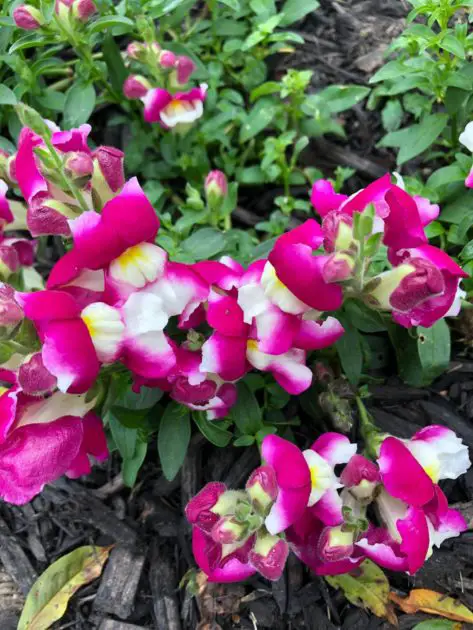 Pin
Pin 10. Snapdragons
Snapdragons bring a touch of magic to any garden. These charming annuals come in a rainbow of colors, from soft pastels to vibrant hues, making them versatile additions to flower beds, borders, and containers. Snapdragons are the perfect types of pink flowers to add to a garden.
Beloved for their unique shape and delightful fragrance, attracting bees, butterflies, and hummingbirds to the garden, they make the perfect addition. Plant them in well-drained soil and provide full sun for best blooming. Water regularly to keep the soil evenly moist, especially during dry spells.
Deadhead spent blooms to encourage continuous flowering and prevent self-seeding. With their upright growth habit and compact size, snapdragons are perfect for adding vertical interest to mixed plantings or creating charming focal points in garden beds. Plus, their long-lasting flowers make them excellent choices for cut flower arrangements, bringing a burst of color and cheer to any bouquet.
Whether used as edging plants, fillers, or standalone features, snapdragons add a touch of whimsy and elegance to any garden landscape.
- Plant snapdragons in well-drained soil and provide full sun to partial shade for optimal growth.
- Water regularly to keep the soil evenly moist, especially during hot, dry periods.
- Deadhead spent blooms to encourage continuous flowering and prevent self-seeding.
- Mulch around the base of the plants to retain moisture, suppress weeds, and regulate soil temperature.
- Watch out for common pests like aphids and spider mites; treat promptly if detected.
- Provide support for taller varieties to prevent them from flopping over in windy conditions.
- Enjoy the vibrant colors and fragrance of snapdragons in your garden, as well as in cut flower arrangements.
Final Thoughts
And there you have it – 10 fabulous types of pink flowers to turn your garden into a paradise of pink! From the timeless elegance of roses to the whimsical charm of snapdragons, each of these blooms brings its unique beauty and personality to your outdoor space. Whether you’re looking to create a romantic retreat or a vibrant burst of color, there’s a pink flower here for every garden style and preference. So, why not add a splash of pink to your garden this season? With these stunning flowers in your midst, you’ll be sure to enjoy endless days of beauty, fragrance, and joy in your outdoor oasis. Happy Gardening!

